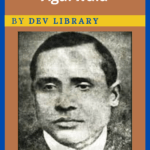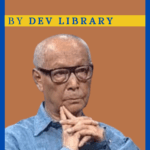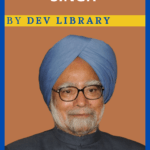After the British occupied India, most of the people of India made efforts to liberate India from British occupation. The first freedom struggle to free India from the British clutches began in 1857. During this freedom struggle, the kings of many states of India bravely confronted the British. People like Tantia Tope, Rani Laxmibai, Mangal Pandey used all their might to make this freedom struggle a success. Tantia Tope is a notable name in the history of India’s freedom struggle. Tantia Tope was one of the most notable leaders of the first freedom struggle and the Sepoy Mutiny that began against the British in 1857. Despite the lack of formal military training, Tantia Tope is considered one of the best rebel generals in the Indian struggle for independence. Importantly, Tope helped many, including Rani Laxmibai of Jhansi, to fight strongly against the British Raj in parallel to fighting against the British.

Biography of Tantia Tope
| Name | Tantia Tope (Tatya Tope)[1] |
| Real Name | Ramchandra Pandurang Yawalkar |
| Date of Birth | February 16, 1814 AD |
| Place of Birth | Yeola village, Nashik, Maharashtra |
| Father’s Name | Pandurang Trimbak |
| Mother’s Name | Rukmini Bai |
| Death | 18 April, 1859 (age of 45), Shivpuri, Malwa, British India, Present day Madhya Pradesh, India |
Early Life of Tantia Tope
Tantia Topper was born on February 16, 1814, in a Marathi Brahmin family in a village called Yeola, near Nashik in Maharashtra. His father’s name is Pandurang Trimbak and mother’s name is Rukmini Bai. Tatya Tope is the eldest of eight siblings. His real name is Ramchandra Panduranga Yawalkar. He later changed his name to Tatya Tope. Tatya Tope on the title Tope, meaning commanding officer. His first name Tantia means General.
Tantia Tope’s father Pandurang Trimbak was one of the housemates of Bajirao (II). Pandurang Trimbak was a loyal worker to Bajirao. For which when the British exiled Bajirao to Bithur near Kanpur in 1918 he travelled to Pandurang Trimbak in Bithur. Tatya Tope was only four years old at that time. Tatya Tope grew up with Nana Saheb in Bithur. He was a personal adherent of Nana Saheb of Bithur. For spending their childhood together with each other there was genuine sincerity between Tantia Tope and Nana Saheb. In a word, Tantia Tope was Nana Saheb’s right hand.
Also Read: Biography of Nana Saheb
His Contribution to the Indian rebellion of 1857
Importantly, Tatya Tope also served in the Artillery Regiment of the Bengal Army under the India Company, though the work under the British was unbearable and uncomfortable for independent and self-respecting Tantia. For which he resigned from the work being done under the British.
After the untimely death of Bajirao (II), the British East India Company, led by Governor-General Lord Dalhousie, stopped giving pension to Nana Saheb’s family through the abolition of ownership policy on the pretext of becoming the future ruler child and took away his rule, because Nana Saheb was an adopted child of Bajirao II. It was around this time that Nana Saheb and Tantia Tope were very angry with this decision of the British and began to devise a strategy of war against the British. Importantly, in parallel with learning how to use guns and swords from a young age, Tantia Tope, along with Nana Saheb, participated in the country’s first freedom struggle in 1857. In May 1857, Tantia Tope was appointed chief of army staff of the Indian Army of the East India Company. He won the military conflict with impressive guerrilla warrior feats.
Later he played a key role in shifting his headquarters to Kalpi and capturing Gwalior with the help of Rani Lakshmi Bai. But even before they could secure their place, they were defeated by General Ross and on June 18, 1858, The Kotah-ki-Serai of Gwalior was martyred. The most unfortunate period of Tantia Tope’s life was the time when Rani Laxmibai was martyred. Subsequently, Tantia Tope fought against the British with his notorious guerrilla tactics. His success as a guerilla fighter played a key role in making him one of the most notable military leaders in the world. Tatya Tope, who is regarded as an organized force and skilled guerrilla fighter, was relentlessly chased by the British. Tantia Tope’s guerrilla tactics disturbed the British generals and moreover they became fed up of his guerrilla tactics.
The brave and courageous Tantia Tope during the Sepoy Mutiny of 1857 continues to inspire Indians even today. On June 5, 1857, Nana Saheb became the leader of the rebels after the rebellion broke out in Cawnpore. Subsequently, on June 25, 1857, British forces surrendered. After the surrender, the British forces were killed by Nana Saheb’s forces at The Satichaura Ghat. By the end of June, Nana Saheb was declared Peshwa. This was followed by a two-time battle with General Havelock but Nana Saheb lost the third battle. After being defeated Nana Saheb agreed to use the prisoners to negotiate with the British. But after the talks failed, on July 15, British women and children were captured and British soldiers were brutally killed. Although it is not known who directed the murder, it is suspected that Tantia Tope gave the order. Since then, Tantia Tope continued to wage war against the British with guerrilla tactics. Tatya Tope met the King Mansingh while continuing with the guerrilla tactics. Within a short span of time Mansingh and Tantia Tope developed a strong bond of friendship. Importantly, there was a diplomatic conflict between Man Singh and the Gwalior king. For which the British forced the King of Gwalior to hand over Tantia Tope in exchange for protecting Man Singh. Tope was captured by the British Army on April 7,1859, due to the deception of his closest friend Man Singh. After being captured by the British Army, Tantia Tope boldly accepted his actions and claimed without regret that these steps were taken only to free India from the British rule. Tatya Tope was hanged by the British on April 18, 1859 for fighting against the British. Importantly, till the end, Tope was engaged in a resistance struggle against the British.
Conclusion
It is to be noted that a statue of Tantia Tope has been installed at Nana Rao Park, a park in Kanpur, along with famous personalities who had actively participated in India’s freedom struggle. Apart from this, another statue of Tatya Tope has been installed at Yeola in Nashik district of Maharashtra to honour him.
Apart from this, the then Union Culture Minister Mahesh Sharma had introduced a commemorative coin and a Rs 10 coin in 2016 to honour Tantia Tope.
Tantia Tope’s contribution to the history of India’s freedom struggle is very important. He was one of the strongest fighters of the first freedom struggle that started against the British. Tatya Tope’s courage will always remain a source of inspiration during the Sepoy Mutiny of 1857, which shook the foundations of British rule in the Indian subcontinent. In one word, Tatya Tope is a glorious example of patriotism and national pride. He is a source of inspiration for the people of the entire country. His name will always remain etched in golden letters in the history of India and he will remain alive in the hearts of every Indian.
FAQ’S
1. When and where was Tantia Tope born?
Ans: Tantia Tope was born on February 14, 1814, in the village of Yeola in Nashik district of Maharashtra.
2. What is the real name of Tantia Tope?
Ans: The real name of Tantia Tope is Ramchandra Pandurang Tope.
3. What is the contribution of Tantia Tope in India’s freedom struggle?
Ans: Tantia Tope’s contribution in building a resistance struggle against British was undeniable. Tantia Tope fought against the British with his notorious guerrilla tactics. Regarded as an organized force and skilled guerilla fighter, Tantia Tope, was relentlessly chased by the British, but he played an important role in organizing the masses through his techniques.
4. Who betrayed Tatya Tope?
Ans: He was betrayed by his close friend Man Singh.
5. What is the father’s and mother’s name of Tantia Tope?
Ans: Tatya Tope’s father’s name is Pandurang Trimbak and mother’s name is Rukmini Bai.
6. When and where Tatya Tope was hanged?
Ans: Tatya Tope was hanged on 18 April 1859 in Shivpuri.

Hi, I’m Dev Kirtonia, Founder & CEO of Dev Library. A website that provides all SCERT, NCERT 3 to 12, and BA, B.com, B.Sc, and Computer Science with Post Graduate Notes & Suggestions, Novel, eBooks, Biography, Quotes, Study Materials, and more.








